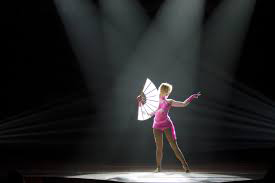 It is the ultimate question – can stage presence be taught or improved upon? Or do dancers just have to do their best with what they’ve got? It is an illusive thing – for some dancers it appears to come naturally whereas others may have trouble with it on stage, regardless of how much they love dance. Stage presence draws your eye to a dancer, it is how they project themselves on stage and connect with the audience, it is the essence of the performer.
It is the ultimate question – can stage presence be taught or improved upon? Or do dancers just have to do their best with what they’ve got? It is an illusive thing – for some dancers it appears to come naturally whereas others may have trouble with it on stage, regardless of how much they love dance. Stage presence draws your eye to a dancer, it is how they project themselves on stage and connect with the audience, it is the essence of the performer.
To that end, many believe that you are either born with stage presence or not, and it is not something that can be taught or learnt. Alternatively, it could be possible that the practice can be adopted, drawing on stage craft and experience rather than something that is inherently within a dancer. Is it simply the projection of the self and a sense of confidence that draws eyes to a particular dancer: they shine and exude confidence, even though their technique may not be of note.
Many agree that the most important part of a performance is the eyes and what the dancer portrays through these. As a result, stage presence could be down to facial expressions and the overall projection of confidence, being focused and ‘in the moment’ of the performance. Here it seems that stage presence can be taught, in the adoption of these techniques. This will feel more natural once the dancer is more comfortable with the choreography, and the aspects of the performance can be in tandem. Confidence will then build naturally. It is always interesting at this point to observe younger dancers who are uninhibited – to this end they are fantastic teachers.
Presence is nothing, however, without being aware of stage space. It is the job of the dancer to take over the stage and overcome it with presence, making the most of every aspect of the performance. Many hours of rehearsals will culminate with this moment so make sure everyone watching is able to acknowledge your performance as you connect to the stage and project your presence as a dancer beyond the studio.
